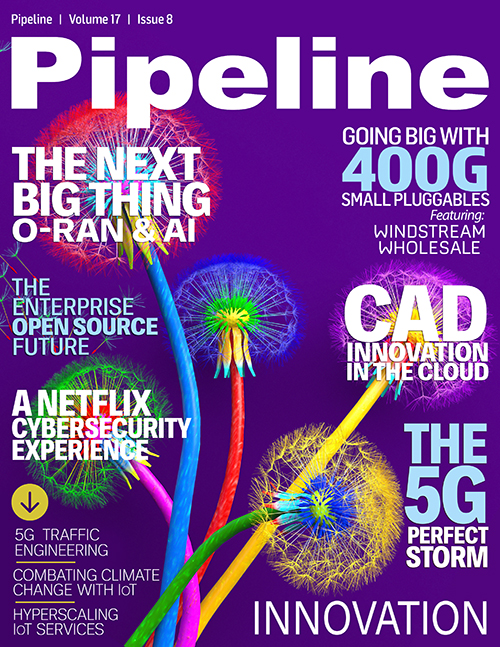O-RAN: The Next Big Thing in Telecom
AI and ML in Open RAN RIC
Artificial intelligence and machine learning (AI/ML) will have a much more comprehensive and transformative impact on the end-to-end network in an O-RAN environment. The O-RAN Alliance specifications provide a framework to use AI and ML to optimize radio resources in LTE and 5G networks. The framework heavily relies on AI/ML technologies to improve performance and operation automation through intelligent algorithms that improve the system continuously. This is done through applications hosted on the RAN Intelligent Controller (RIC) platform, which can be implemented for near real-time control and non-real-time control. AI-enabled policies and ML-based models generate messages in non-RT RIC and are conveyed to the near-RT RIC.
RIC is evolving, and projects are ongoing
RIC is evolving, and a number of new initiatives have come to the fore. For example, at the end of August 2020, the Open Networking Foundation (ONF) introduced a software defined radio access network (SD-RAN) project to develop an open-source Near Real-Time RAN Intelligent Controller (nRT-RIC) that is compatible with the O-RAN architecture. In September 2020, Samsung and KDDI demonstrated a network slicing use case involving an RIC to manage radio resources to guarantee required service levels.
The TIP OpenRAN 5G NR Project Group is also active, with the launch of its RAN Intelligence and Automation (RIA) subgroup to develop and deploy AI/ML-based applications (as xApps) for a variety of RAN use cases, including radio resource management, massive MIMO, quality of experience, optimization, and more.
AI/ML-based closed-loop automation
Because Open RAN provides flexibility in terms of disaggregation and interfaces, it can optimally use AI/ML for optimization and automation in a way that these actions are not guided but are fully closed-loop automation. Open RAN provides multiple touchpoints in terms of open interfaces to perform data collection and enrichment information, which can be used for model training to enable intelligent feedback mechanisms to enable AI/ML-based closed-loop automation. Open RAN supports open APIs like xApps and rApps for real-time and non-real-time model implementation and decision-making, which allows the accommodation of multiple models and the selection of the best-suited solution for the use case.The overall approach drift and AI/ML-enabled closed-loop automation would help in reducing OPEX through advanced and adaptive self-managing capabilities, which would help in accelerated time-to-value and reduced risk of human errors.
The O-RAN future
The RAN ecosystem has evolved significantly at each stage of mobile network technology transformation, from the days of 2G, to now, the inception of 5G. As 5G moves toward becoming mainstream, Open RAN at the network edge is expected to benefit applications, including autonomous vehicles and Internet of Things (IoT) solutions.
ABI Research has predicted that Open RAN CAPEX spending will overtake
traditional RAN spending by 2028. Leading European telecommunications operators, including Deutsche Telekom, Orange, Telefónica and Vodafone, have already committed to deploying Open RAN as
part of their 5G rollouts. The open standards promoted by the O-RAN Alliance will allow the development of open interfaces and faster deployment of radio access networks by leveraging
technologies such as AI/ML and real-time analytics. Additionally, Open RAN brings considerable innovation potential to the telecommunications industry by creating an open ground for innovation,
not just for traditional RAN vendors but also for new players and startups, ensuring revolution in network economics as we know it today.


















